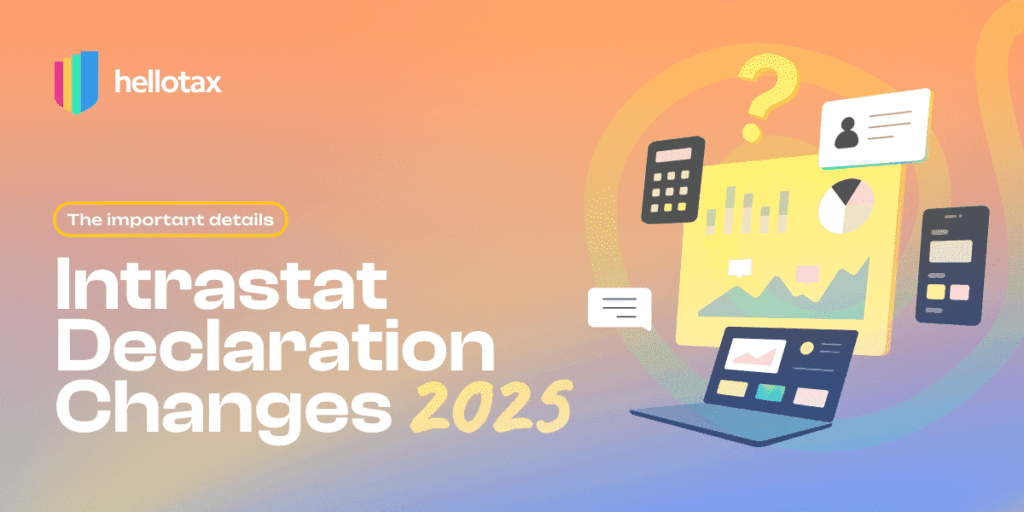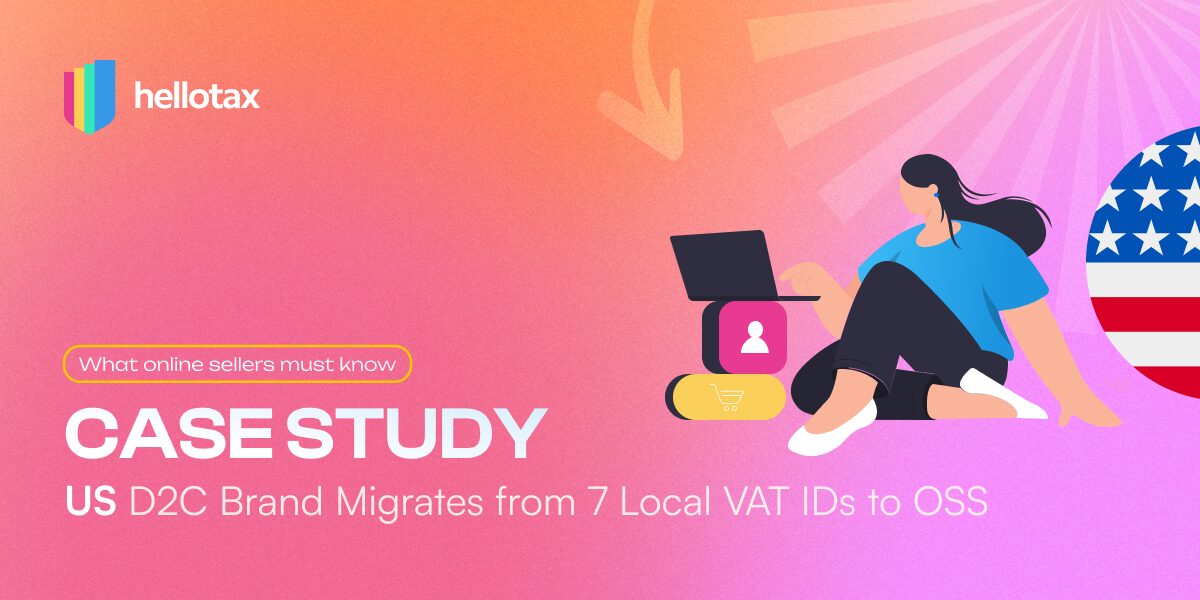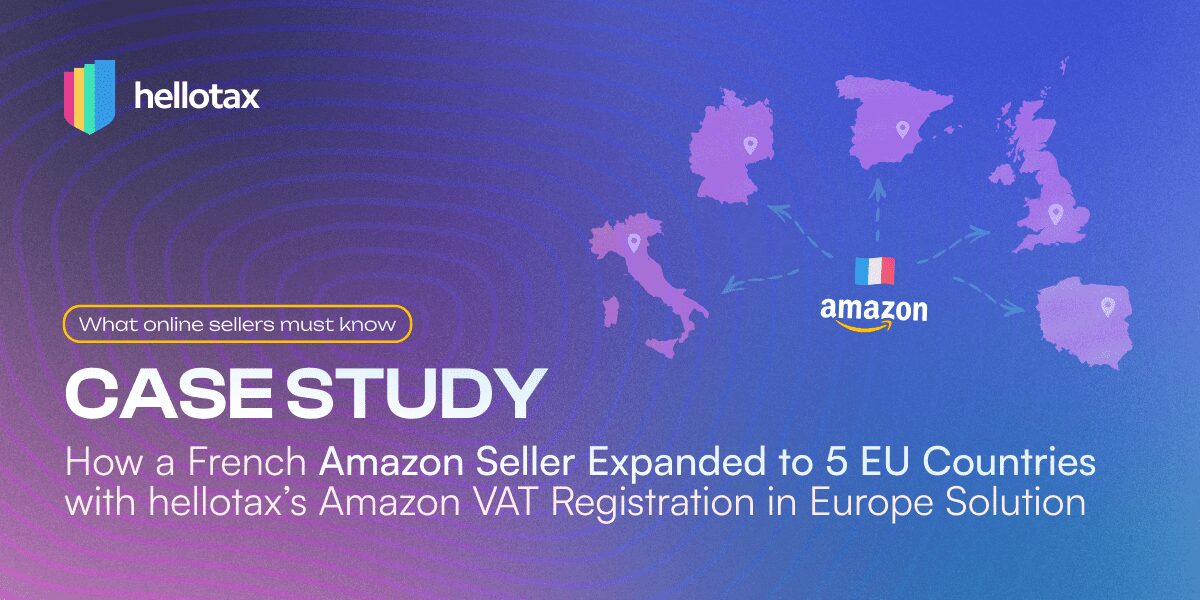Entrepreneurs who trade across the EU must not only submit VAT returns, but also Intrastat returns. These control the movement of goods in Europe. Since January 2022, there have been some changes for those subject to the reporting requirement. You can find out more about this in the following article.
Antonia Klatt
Last Updated on 21 December 2021
What is an Intrastat declaration?
Intra-trade statistics (Intrastat) reports must be submitted by all companies across the EU in order to record the movements of goods that have taken place in Europe. All entrepreneurs registered for VAT with foreign contractual partners for the purpose of transporting goods, for which no customs declarations are required, are required to report. The only exceptions are entrepreneurs
- whose dispatches to EU countries had a maximum value of €500,000 and
- whose receipts from EU countries had a maximum value € 800,000 in the previous year
🚨 Update: Intrastat Threshold Changes in Germany (Effective January 2025)
Starting 1 January 2025, Germany has significantly raised its Intrastat reporting thresholds. This means fewer businesses will now be required to file Intrastat reports:
-
Arrivals (imports into Germany): raised from €800,000 to €3,000,000
-
Dispatches (exports from Germany): raised from €500,000 to €1,000,000
👉 What this means for sellers: If your annual trade volumes fall below these new limits, you are no longer obliged to submit Intrastat declarations in Germany. However, if you exceed them, the 2022 reporting requirements (such as country of origin and partner VAT ID) still apply.
These new thresholds bring Germany in line with the wider EU Intrastat reform under Regulation (EU) 2019/2152 on European Business Statistics and Implementing Regulation (EU) 2020/1197, aiming to simplify reporting obligations for small and medium-sized businesses.
📌 Related: Understand Intrastat thresholds and obligations.
What changed in the Intrastat filing from 2022?
As of January 1, 2022, a new EU regulation (2019/2152) replaced the previous European basic regulations on foreign trade statistics, and a new implementing regulation (2020/1197) replaced the current one. This resulted in the following changes to the Intrastat declaration:
- New list and naming of the types of business
- No more summarizing report
- Specification of the country of origin of export goods when shipping to other EU countries
- Specification of the sales partner’s VAT ID in the importing country
New list and naming of the types of business
A new list of types of business was issued with the new regulations. These are not only named differently, but also numbered differently. Therefore, the latest list applies to all goods movements to be reported from January 2022. This list is also used in the course of customs declarations.
No more summarizing report
Thanks to the new regulations, separate reports must be submitted for each combination of recipient and country of origin. This means that a single summarizing report is no longer allowed.
You may only group (summarize) goods movements together if all of the following details are exactly the same:
-
country information
-
type of transaction
-
mode of transport
-
goods number
-
recipient’s VAT ID (if applicable)
Since these conditions are strict, this change may increase the administrative workload for businesses.
Specification of the country of origin of export goods when shipping to other EU countries
Previously, information on the origin was only necessary if the goods were moved domestically. That changed on January 1, 2022. Since then, the origin information must also be given for goods that are moved to other EU countries. The aim of this change is to match the information on the entry with the information on the exit in the other country.
Specification of the sales partner’s VAT ID in the importing country
Another change to the Intrastat report from 2022 is the mandatory specification of the VAT identification number of the goods recipient. However, this number is not always known.
In the case of triangular transactions where the VAT ID of the final recipient is not known, the country code of the intermediary or invoice recipient and number 9 must be specified twelve times in case of doubt.
In the case of chain transactions in which the intermediary resells the goods in his home country, the verified VAT identification number of the first foreign partner or the intermediary must be given.
If the VAT ID cannot be checked, the code QV and 12 times the number 9 must be entered instead. The identification number is then checked directly by the Federal Statistical Office. If the recipient is a private person instead, the code QN and the number 9 are given twelve times.

Book a free consultation
Our VAT experts are happy to help you. Book a free consultation today!
Conclusion & Key Takeaway
Intrastat declarations are a key part of EU trade compliance. Since 2022, businesses must provide more detailed information, including the country of origin and the VAT ID of trading partners. From January 2025, Germany has raised its Intrastat thresholds to €3,000,000 for arrivals and €1,000,000 for dispatches, meaning many smaller businesses are no longer required to report.
👉 The takeaway: Staying compliant requires keeping track of both the reporting rules and the current thresholds. Even if you fall below the new limits, monitoring your trade volumes remains essential.
How hellotax Can Help
At hellotax, we take the complexity out of Intrastat and VAT compliance:
-
⚡ We monitor your sales and trade volumes in real time.
-
📊 We handle Intrastat declarations and VAT filings across the EU.
-
🌍 We support Amazon and online sellers with automated tools and expert guidance.
With hellotax, you can focus on growing your business while we take care of the reporting.
👉 Book your free consultation today and let our VAT experts simplify your Intrastat and VAT compliance.




